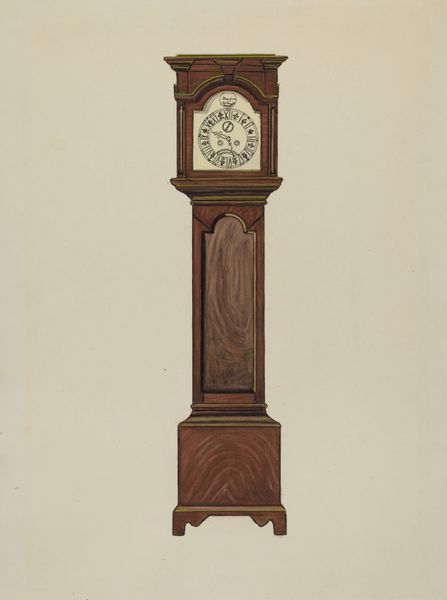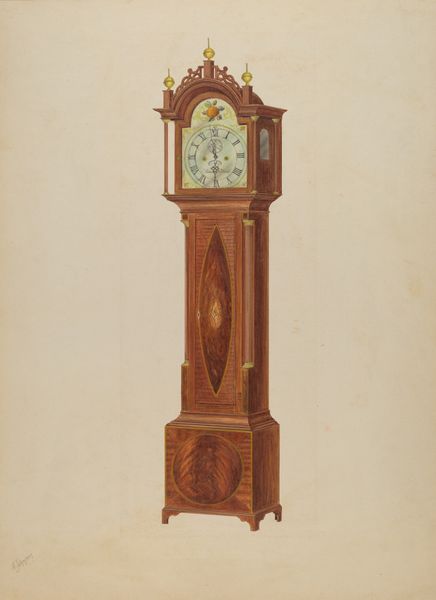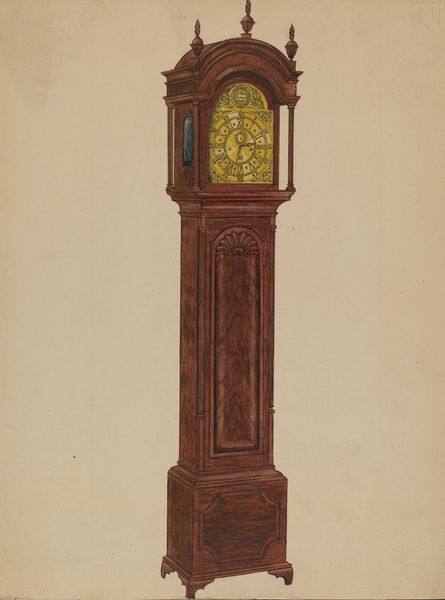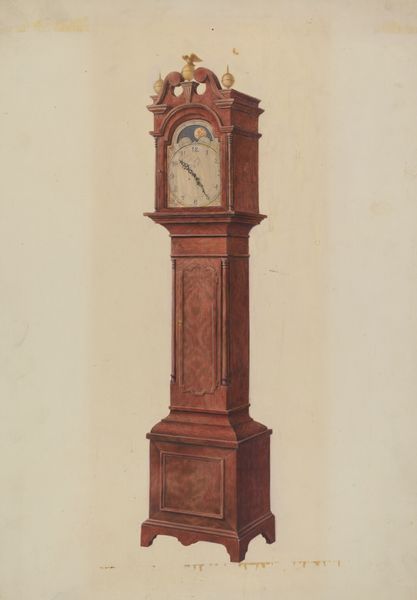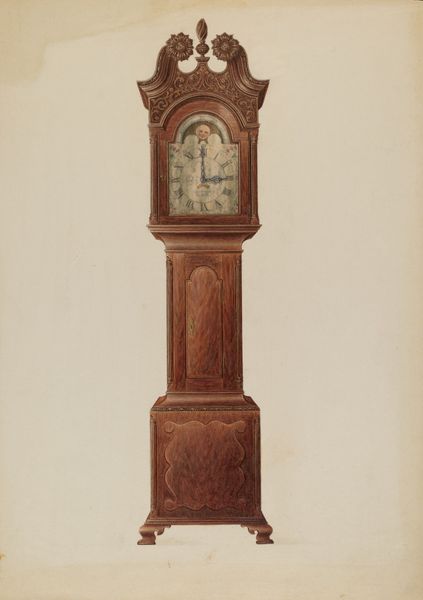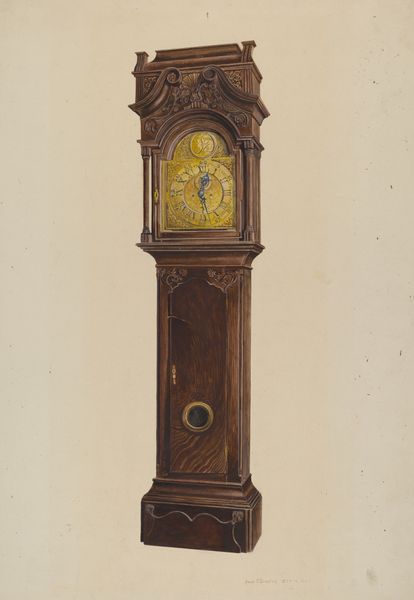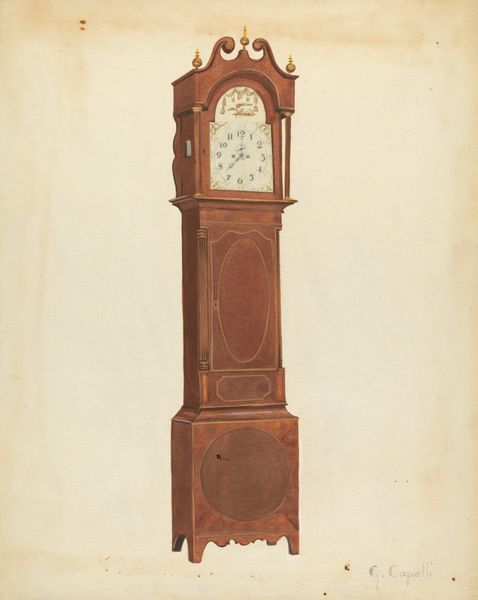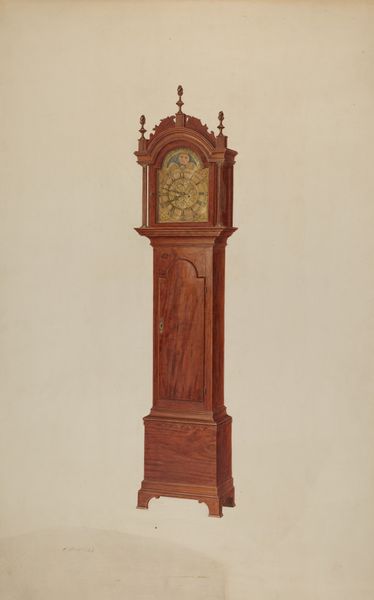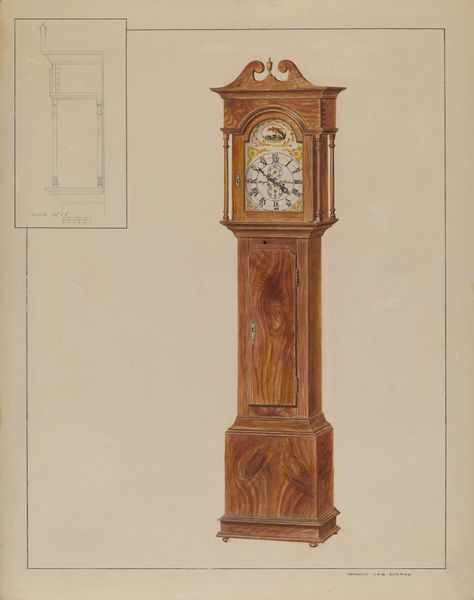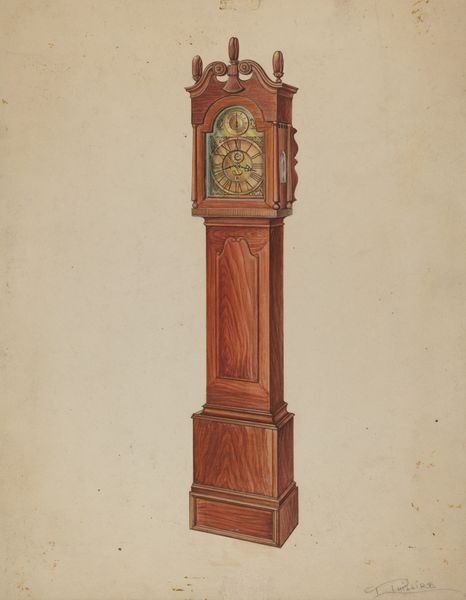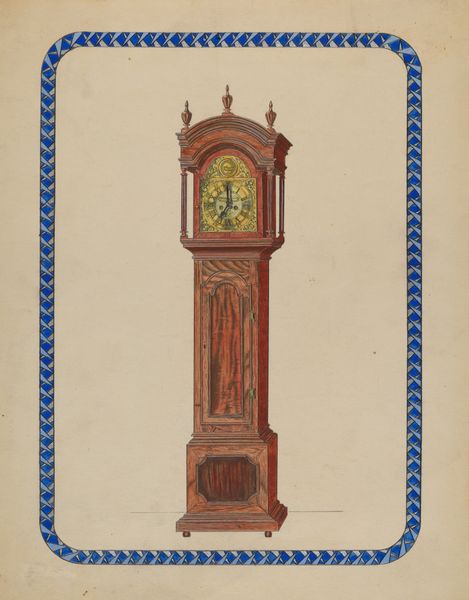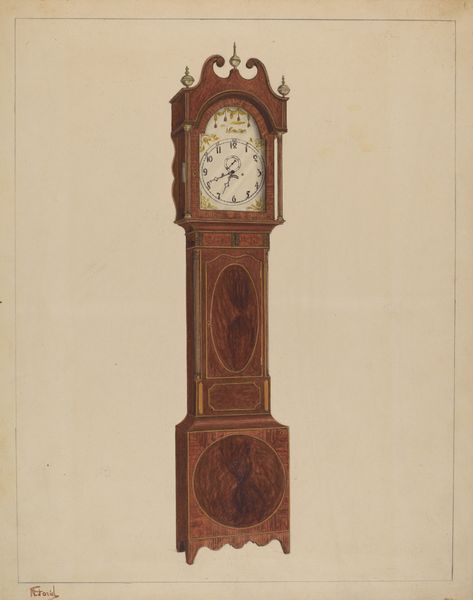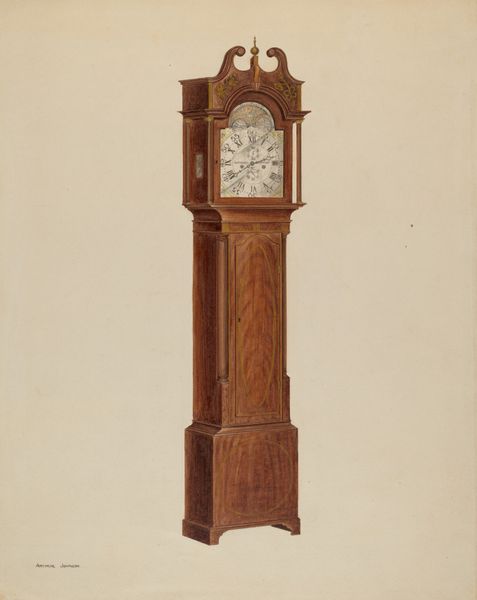
drawing, watercolor
#
drawing
#
watercolor
Dimensions: overall: 30.7 x 22.8 cm (12 1/16 x 9 in.) Original IAD Object: 7'6"h; 16"widest pt.; See data sheet for details.
Copyright: National Gallery of Art: CC0 1.0
Curator: Before us we have "Grandfather Clock," a drawing and watercolor made around 1938 by Ernest A. Towers, Jr. Editor: Well, immediately, there's a somber stillness to it, a rigidity. Almost oppressive in its height, looming. Curator: Interesting observation. I’m drawn to the geometry first. The clean lines forming rectangular volumes, counterpointed by the arched hood. The warm brown tones dominate, establishing visual weight. Consider how the artist employs these elements to structure the image. Editor: But the *idea* of a grandfather clock… time ticking away, the social rituals and hierarchical family structures it once symbolized within a home. This piece, created in the late 30's…were these now obsolete symbols for some families, affected by The Depression? Curator: It does beg the question of its cultural context, especially at the end of The Depression. Towers does seem to explore surface textures: notice the grain of the wood is very precisely represented, alongside the detail in the clock's face, and this is rendered in watercolor... Editor: Precisely! The material representation reinforces how constructed social status can be... fragile or transient, because *all* of this breaks down, naturally, or institutionally. Curator: Certainly a rich interpretation that encourages a discussion about social change through the symbolic lens of the artifact. But it is through the deliberate balance of the form that a deeper sense of stillness comes to be. The play of shadows reinforces a classical simplicity in the composition... Editor: Yes, these details give this image of obsolescence more enduring force because they also make us reflect on *how* that system affected families for generations! Thanks for walking me through that. Curator: A pleasure! It is through these visual and critical conversations that we come to an enhanced understanding of this work.
Comments
No comments
Be the first to comment and join the conversation on the ultimate creative platform.
